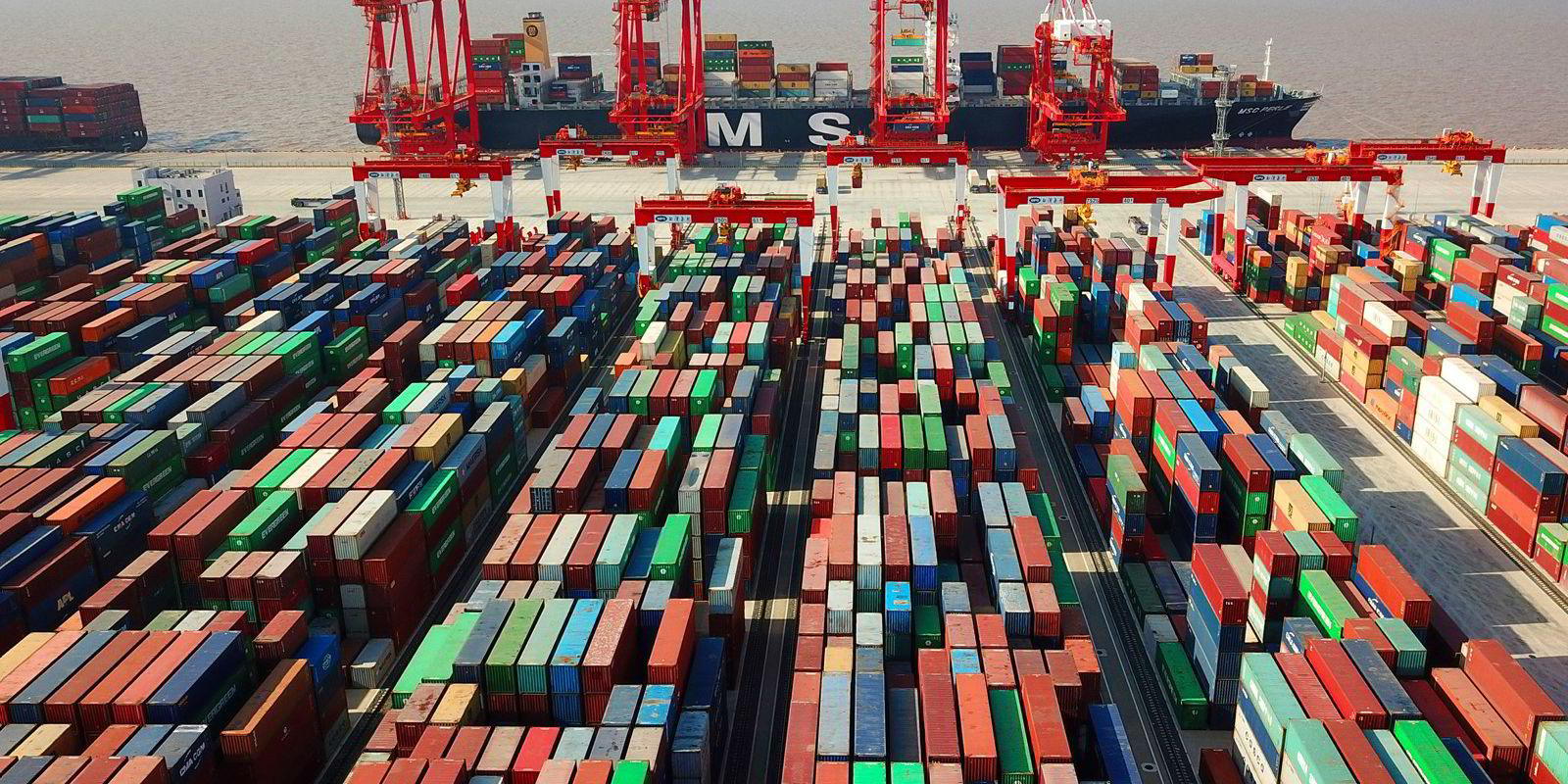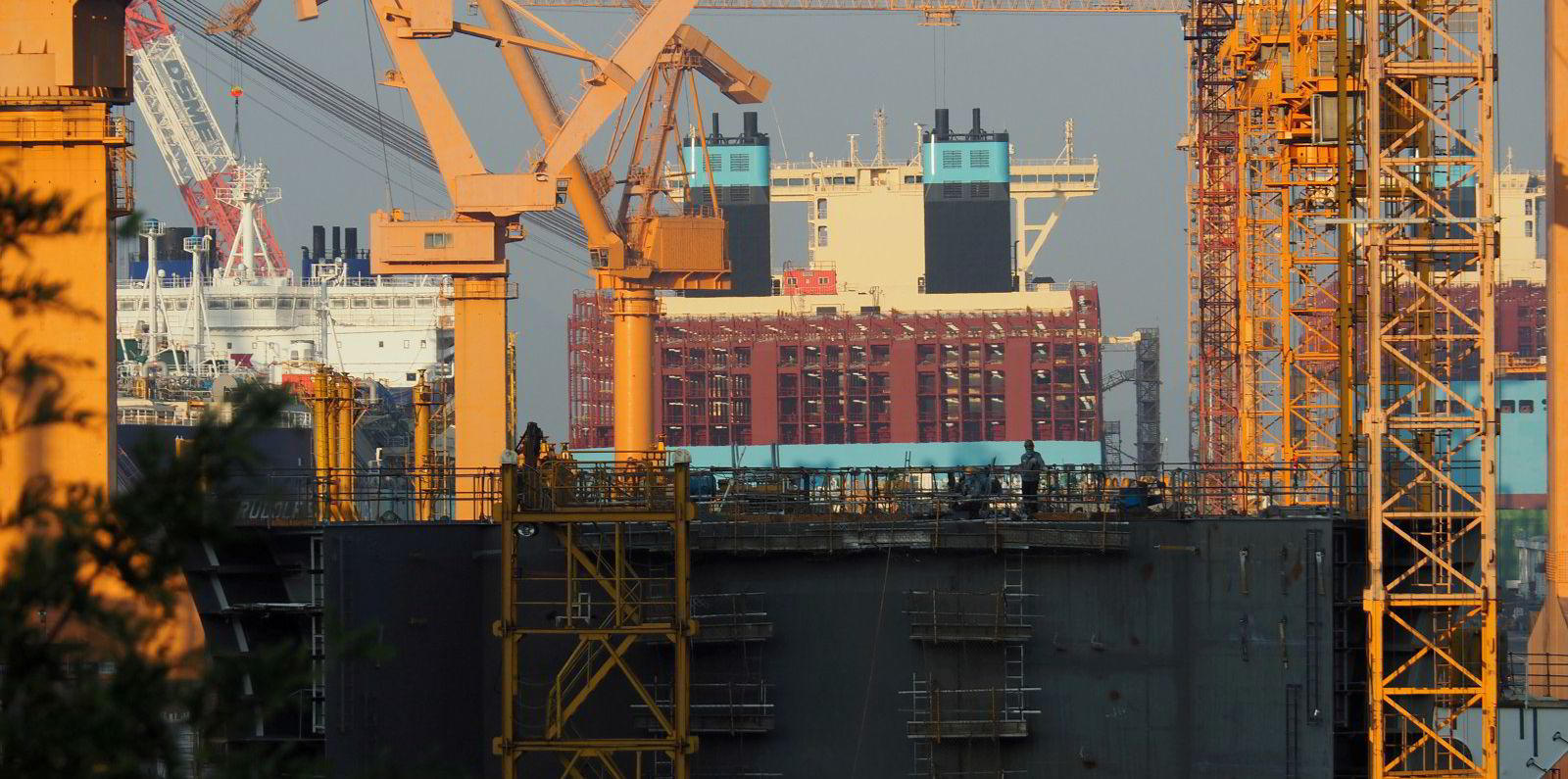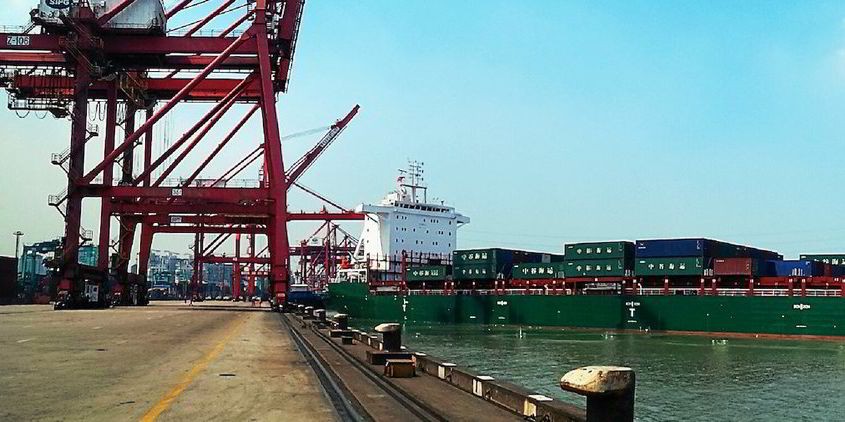There is a stunning new documentary series on BBC iPlayer called "Can’t Get You Out of My Head: An Emotional History of the Modern World". Do not ask me the exact message that celebrated filmmaker Adam Curtis is trying to get over — it is something to do with individualism, alienation and the nature of power — but do luxuriate in the stories, visuals and audio.
Anyone who uses soundtracks by obscure post-punk band the Mekons — from my hometown of Leeds — is OK by me.
But one real interest is the tale of Jiang Qing, also known as Madame Mao, and how she helped create the disastrous Cultural Revolution in China in the mid-1960s.
Wikipedia says the number of deaths associated with that political purge was between hundreds of thousands and 20m. And, 20 years earlier, there had been a great famine in China, which some claim could have killed as many as 30m people.
It is with this perspective that one can only marvel at the latest issue of Alphaliner’s weekly newsletter, which reminds you of the phenomenal success of China’s recent economic history and its version of state capitalism.
The newsletter highlights the way Chinese ports now completely dominate the container rankings.
This country, which could not feed itself after World War II, has become the first workshop of the world.
Five of the top six biggest container ports in the world are now in China, with Shanghai pre-eminent at number one.
Shanghai surprise
In 2020 — the year of Covid-19 and the biggest dislocation of the global economy since the Great Depression in the 1930s — Shanghai grew its business even more. Some 43.5m teu moved through that port; about 6% more than Singapore in the same 12 months.
The third-placed boxship handling docks at China’s Ningbo-Zhoushan did even better comparatively, increasing throughput by 4.4%, according to the Alphaliner statistics.
The growth in the importance of Chinese ports comes alongside the rising shipbuilding, shipowning and maritime services sectors
The Chinese port of Qingdao pushed South Korea’s Busan out of sixth position, while Tianjin overtook Hong Kong for eighth place.
Los Angeles/Long Beach, in 10th place, is the first non-Asian location to feature in the list, while Rotterdam is the first European dock complex at number 11.
An interesting newcomer to the top 25 is the Moroccan container port of Tanger Med, which saw a 20% rise in throughput to 5.7m teu in 2020 over the previous year.

Some of the statistics are affected by consolidation. China now has only nine ports in the top 25 compared with 11 two years ago, after the government sought to stop smaller Chinese ports undercutting each other. Management of Dalian and Yingkou docks was amalgamated last year in a bid to reduce overcapacity.
The growth in the importance of Chinese ports comes alongside the rising shipbuilding, shipowning and maritime services sectors.
There is burgeoning local capacity in a variety of areas, including maritime arbitration and protection-and-indemnity insurance.
Meanwhile, the overall cargo volumes through the top 25 ports during 2020 were flat, as the pandemic caused serious problems in all parts of the world.
But it was boom time for many of the boxship operators, with freight rates racing ahead — particularly on the transpacific routes between China and the US.
This ended with AP Moller-Maersk — the world’s biggest independent liner operator — posting record financial Ebitda profits of $2.7bn in the fourth quarter of 2020. Earnings from the ocean division were up by 96% compared with the same period in the previous year.
Boom time
In fact, there are now rising expectations that the first quarter of this year will be even better for Maersk due to continuing port congestion, equipment shortages and supply chain problems.
Even if freight rates fall back as lockdowns are eased and more normal trade patterns develop, Maersk said full-year profits could still hit $10.5bn in 2021.
German liner operator Hapag-Lloyd is peddling a similar story, saying last week that the first quarter is very strong and full-year profits this year should be higher than in 2020.
Tensions continue between shippers and operators as a result of spot freight rate spikes and shortages of tonnage. The liner trades are booming and it is difficult to get the key role of China out of your head.






